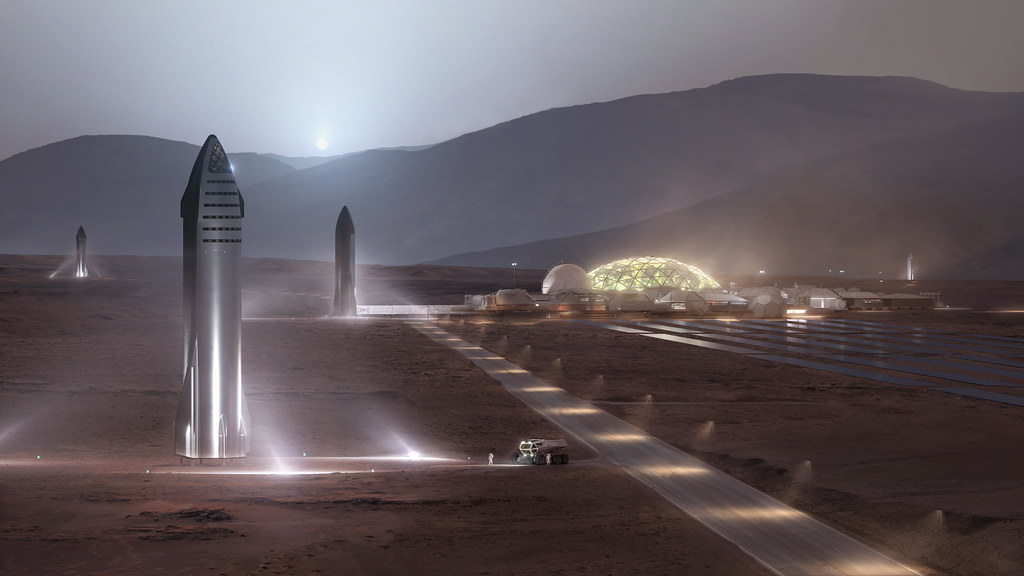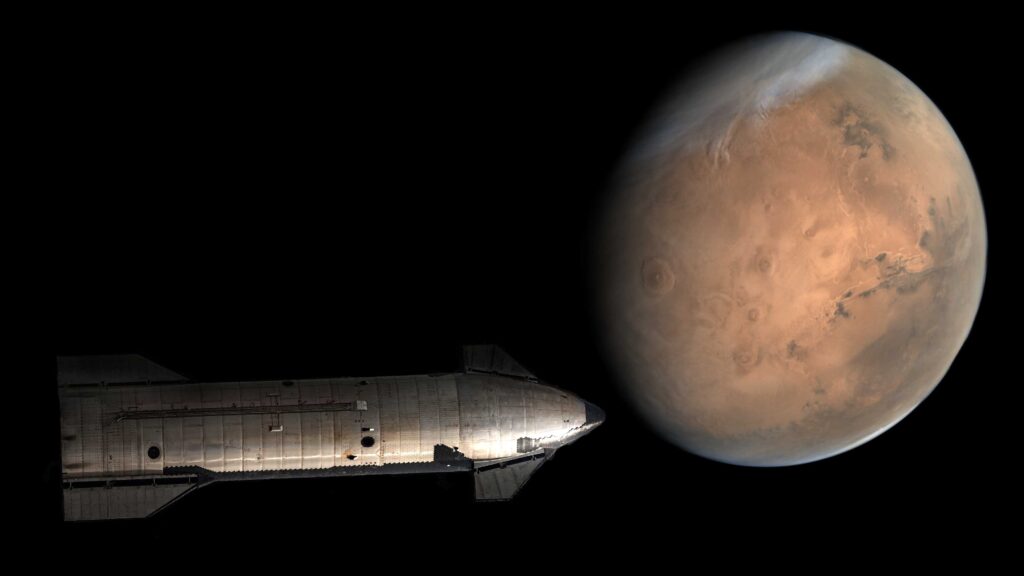Space exploration has always captivated humanity’s imagination, and SpaceX, under Elon Musk’s visionary leadership, continues to push the boundaries of what’s possible. Recently, Musk hinted at a first mission to Mars as early as next year, an ambitious timeline that has sparked excitement and skepticism alike. But how can SpaceX pull off such a monumental feat when Starship still has so many milestones to achieve?
This blog post delves deep into SpaceX’s plan, the challenges ahead, and what the journey to Mars might look like in 2026.
The Bold Vision: Mars Mission Sooner Than Expected
Elon Musk has shocked the spaceflight community by suggesting that a Mars mission carrying an Optimus payload could happen within 3 and a half years, with a slim chance it could be as early as the end of next year. This announcement electrified space enthusiasts but also raised serious questions:
- How can SpaceX meet this aggressive timeline when Starship hasn’t yet reached orbit?
- What critical objectives still need to be accomplished before Mars becomes a reality?

Musk admits that many things need to go perfectly for this to happen, and he’s right. To make a Mars mission possible, Starship must achieve several key milestones within a very tight timeframe.
Current Status of Starship: What’s Left to Do?
At present, Starship has not yet reached orbit nor has it:
- Deployed a real payload into orbit,
- Mastered full two-stage recovery,
- Built or tested the complex orbital refilling system essential for Mars missions.
These are not optional tasks; they are absolutely necessary for the success of a Mars mission. Each milestone must be checked off rapidly — some within just a few months — for Musk’s ambitious vision to become reality.
SpaceX’s Plan for 2026: 25 Launches From Starbase
SpaceX has already announced plans to launch up to 25 missions from Starbase in 2026, a rate of activity unprecedented in the space industry. This frenetic pace could enable rapid iteration, frequent testing, and the opportunity to accomplish the crucial milestones that Starship needs to hit for a Mars mission.
Leaked timelines and internal suggestions hint at how these 25 flights might be organized, creating a plausible roadmap to Mars. Let’s walk through the potential flight plan:
Flights 11 to 13: Testing and Reusability
- Flight 11: Expected to be similar to Flight 10, serving as a final Gen 2 test before transitioning to Version 3 hardware.
- Flight 12: Likely the first V3 mission, focusing on testing major upgrades without attempting orbit. Originally planned for this year, it may slip into 2026.
- Flight 13: A pivotal mission aiming to reach orbit and catch both stages during landing — a massive technical hurdle. Success here would mark a huge leap forward.
Flights 14 to 15: Refining and Deploying Payloads
- Flight 14: Focused on refining the stage-catching process.
- Flight 15: Expected to be the first mission deploying a payload into orbit, marking the achievement of three critical goals: reaching orbit, demonstrating reusability, and payload deployment.

Flights 16 to 18: Orbital Refilling System Development
- Flights 16 & 17: Two Starships launched — one as a target, the other as a chaser — to demonstrate orbital docking and fuel transfer, a first in space exploration.
- Flight 18: Deployment of an orbital fuel depot, acting as a propellant storage hub for Mars-bound Starships.
Flights 19 to 34: Tanker Flights Stocking the Depot
Given that a Starship requires approximately 1600 tons of propellant but can only carry about 100 tons per launch, it would take around 16 tanker flights to fully stock the depot. These tanker flights (flights 19 through 34) would continuously refuel the depot in low Earth orbit.
Flight 35: The Historic Mars Mission
With the depot fully fueled and Starship ready, flight 35 would mark the first mission to Mars. Starship would dock with the fuel depot, take on its full propellant load, and embark on the months-long journey to the red planet.
Possible Accelerations: Combining Milestones
There’s a chance SpaceX could accelerate the timeline by combining milestones, such as:
- Catching both stages and reaching orbit on flight 13,
- Deploying payloads on flight 14,
- Conducting refilling demonstrations on flights 15 and 16,
- Launching the fuel depot on flight 17,
- Starting tanker flights from flight 18 onwards,
- Launching the Mars mission by flight 34.
This approach could leave two spare flights within the 25-launch schedule, providing some buffer for unexpected issues.
The Reality Check: Challenges and Risks
While the timeline is theoretically possible, it depends on everything going right — a tall order in rocketry, where perfection is rare. Some challenges include:
1. Technical Complexity
- Launching a new vehicle variant,
- Achieving orbit,
- Catching both stages with the giant “Mechazilla” arms,
- Deploying payloads,
- Building and testing orbital refilling systems.
Each system represents a monumental technical feat with inherent risks.

2. Balancing Mars and Moon Missions
SpaceX isn’t just focused on Mars; they’re also competing in the moon race. NASA’s Artemis program requires Starship for uncrewed lunar landing demonstrations, which will also rely on orbital refilling.
This tug of war means that focusing entirely on Mars could slow lunar progress and vice versa. SpaceX must carefully balance these priorities.
3. Launch Cadence
Currently, the best turnaround time between Starship flights is 37 days, but the Mars mission requires two to three launches every month. Achieving this is revolutionary and demands:
- Massive ramp-up in vehicle production,
- Continuous testing cycles,
- Fully operational launch infrastructure.
4. Infrastructure Limitations
- Pad 2 at Starbase is expected to handle most launches but isn’t sufficient alone,
- Pad 1 requires upgrades,
- Kennedy Space Center’s LC39A pad is still under development,
- Transporting Starships to Florida remains a logistical challenge.
Scaling Production: The Star Factory Challenge
To sustain the rapid launch rate, SpaceX will need dozens of new vehicles since many early flights will expend Starships and boosters. Rough estimates suggest about 20 prototype pairs might be necessary — far beyond current production levels.
The Star Factory must operate at full capacity without pauses to meet this demand, producing nose cones, rings, and entire vehicle stacks at an unprecedented rate.
Testing Demands: No Skipping Steps
Every Starship undergoes a rigorous testing sequence before launch, including:
- Cryogenic tests of the booster and Starship,
- Static fire tests,
- Inspections and certifications.
Recent setbacks, such as the S36 incident, damaged testing infrastructure, which now needs rapid recovery to avoid bottlenecks.
Why the Push? Strategic and Geopolitical Stakes
Launching Starship to Mars by 2026 would be a groundbreaking achievement, putting the US decisively ahead in the space race against China, which has its own ambitious Mars sample return missions planned.
Moreover, successfully reaching Mars opens the door to making humanity a multiplanetary species — a dream Elon Musk has championed for years.

Alternatives: A More Measured Timeline
Some experts argue a balanced approach focusing first on lunar priorities, then scaling up Mars efforts, might be wiser. Musk himself has hinted at broader windows for Mars missions, targeting:
- 2027 for an accelerated push,
- 2028–2029 as more realistic, allowing production, infrastructure, and systems like orbital refilling to mature.
This would increase success odds by giving SpaceX more room to iterate and fix issues.
Conclusion: The Next Two Years Are Decisive
Whether the Mars mission happens in 2026 or later, the coming years are crucial. SpaceX must:
- Prove Starship’s reliability,
- Increase flight cadence dramatically,
- Build infrastructure and production capacity,
- Nail critical milestones like orbital refilling.
The decisions made now will define SpaceX’s legacy — either as bold pioneers who rushed humanity’s first steps to Mars or as careful planners who ensured lasting success.
What Do You Think?
Can SpaceX truly pull off this audacious plan and send Starship to Mars as early as next year? The path is fraught with technical hurdles, logistical challenges, and competing priorities — but SpaceX has made the impossible possible before.
FAQs
1. When does Elon Musk plan to launch the first Starship mission to Mars?
Elon Musk has hinted that the first mission to Mars could happen as early as the end of 2025, with a more realistic window within 3 and a half years.
2. How many Starship launches is SpaceX planning for 2026?
SpaceX has outlined a plan to conduct up to 25 launches from Starbase in 2026 to rapidly test and prepare Starship for the Mars mission.
3. What are the major milestones Starship needs to achieve before a Mars mission?
Key milestones include reaching orbit, deploying payloads, mastering two-stage recovery, and building/testing the orbital refilling system.
4. What is the orbital refilling system, and why is it important?
The orbital refilling system allows Starship to dock in orbit and transfer fuel, enabling the spacecraft to carry enough propellant for a trip to Mars.
5. How many tanker flights are required to fuel a Mars-bound Starship?
Approximately 16 tanker flights are needed to fully stock the orbital fuel depot to support a single Mars mission.
6. What challenges does SpaceX face in achieving a 25-launch cadence?
Challenges include scaling up vehicle production, maintaining rapid testing cycles, expanding launch infrastructure, and ensuring reliable stage recovery.
7. Has Starship successfully reached orbit yet?
As of now, Starship has not yet reached orbit, which remains one of the critical hurdles before any Mars mission can occur.
8. What is the significance of “catching both stages” during Starship launches?
Catching both the booster and the Starship during landing improves reusability and reduces costs, which is essential for the frequency of launches planned.
9. How does SpaceX’s Mars timeline affect its lunar missions?
SpaceX must balance resources and priorities between Mars missions and NASA’s Artemis program lunar landings, as both require orbital refilling technology.
10. What upgrades are planned for Starship Version 3?
Version 3 includes major hardware upgrades to improve performance, reusability, and mission capability, tested in early 2026 flights.
11. Why is production capacity a concern for SpaceX’s Mars plans?
To meet the rapid launch schedule, SpaceX needs to produce dozens of Starship and booster prototypes, far beyond current factory capabilities.
12. What role do launch pads at Starbase and Kennedy Space Center play in the mission cadence?
Multiple operational launch pads are necessary to support frequent launches; currently, Pad 2 is primary, with Pad 1 and LC39A under development.
13. How long does it currently take to turnaround a Starship for another launch?
The fastest turnaround so far is about 37 days, but the Mars timeline demands a much faster cadence of two to three launches per month.
14. What could delay SpaceX’s Mars mission timeline?
Technical setbacks, failed tests, infrastructure issues, or shifting company priorities could push the Mars mission beyond 2026.
15. How does the Mars mission fit into the larger space race?
A successful Mars mission would give the US and SpaceX a strategic edge over competitors like China, which has its own ambitious Mars exploration plans.
16. What are the risks involved in such an aggressive mission schedule?
The risks include mission failures, unproven technology, stretched resources, and logistical bottlenecks, any of which could cause significant delays.
17. Could SpaceX prioritize the Moon over Mars instead?
Some analysts suggest a balanced approach focusing first on lunar missions before accelerating Mars plans might improve chances of success.
18. What happens if SpaceX doesn’t meet the 2026 Mars mission goal?
Even if the 2026 goal slips, SpaceX aims for 2027 to 2029 for Mars, giving more time to refine technology and infrastructure for a successful mission.
Read More:
- Tesla reportedly places large order for robot parts, hinting that Optimus V3 design is all but finalized
- Starship’s next chapter: SpaceX eyes tower catch after flawless Flight 11
- Tesla Gigafactory Texas builds its half millionth vehicle
- Tesla launches new interior option for Model Y
- Tesla Insurance is heading to a new state for the first time in years


I did some research on Mars Radiation levels.
We don’t hear the dangers of humans traveling to and living on Mars! It is an uninhabitable planet, when you consider normal living that we are used to here on Earth. The results of my research are below.
This radiation and time of exposure is only considering Mars alone. It does not consider the radiation and time exposure for the months of travel in Space to Mars.
Long-term Radiation Exposure
Comparative Exposure:
On Earth, the average person receives about 200 to 300 mSv over a 100-year lifespan through natural background radiation and medical procedures.
In contrast, on Mars, astronauts could accumulate that same dose in just 300 to 1,000 days due to higher radiation levels.
Daily Radiation Doses:
The average radiation dose on the Martian surface is approximately 0.2 to 1.0 mSv per day. This means that over time, even short missions could lead to significant cumulative exposure, raising the risk of long-term health effects.